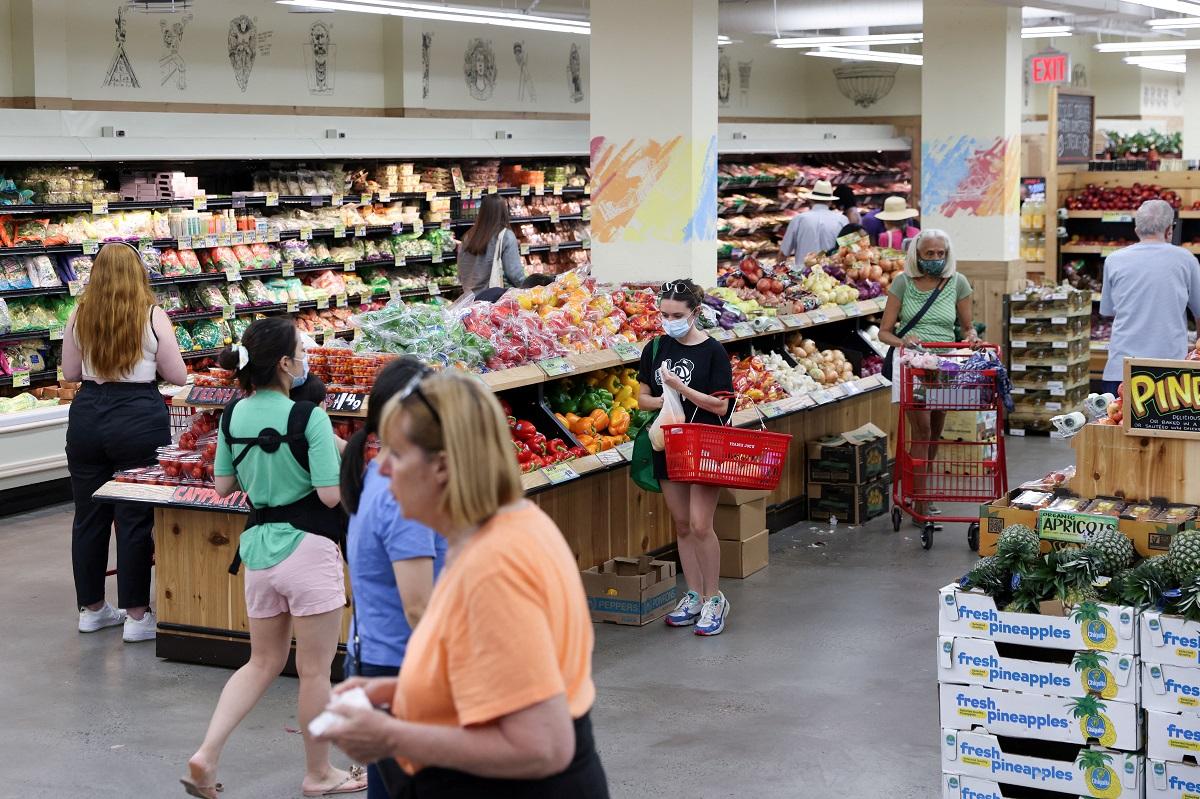US annual inflation slows to below 5%, price pressures still strong

WASHINGTON - The annual increase in US consumer prices slowed to below 5% in April for the first time in two years, while a key inflation measure monitored by the Federal Reserve subsided, potentially providing cover for the central bank to pause further interest rate hikes next month.
Nevertheless, inflation remains too strong, with the report from the Labor Department on Wednesday showing monthly consumer prices rising solidly because of sticky rents as well as rebounds in the costs of gasoline and used motor vehicles. The mixed report dashed financial market hopes that the Fed would start cutting rates this year to shore up the economy.
"Today's consumer inflation report supports the case for the Fed to seriously contemplate a pause in rate hikes in June, but does not support any near-term rate cuts," said Scott Anderson, chief economist at Bank of the West in San Francisco.
The Consumer Price Index (CPI) rose 0.4% last month after gaining 0.1% in March. The increase was in line with economists' expectations. Stubbornly high rents accounted for much of the increase in inflation.
There were, however, pockets of relief for consumers.
Food prices were unchanged for a second straight month. Grocery store prices fell 0.2% after decreasing 0.3% in March, posting back-to-back declines for the first time since July 2019. Fruits and vegetables, meat, fish and eggs were cheaper compared to March. Milk prices dropped 2.0%, the most since February 2015.
Natural gas prices tumbled 4.9% and the cost of electricity dropped for the second straight month, blunting some of the 3.0% jump in gasoline prices, which followed a 4.6% plunge in March.
The rebound came after Saudi Arabia and other OPEC+ oil producers announced further oil output cuts. But oil prices have since been largely trending lower, pushing gasoline costs down as risks of a recession have increased, because of the Fed's punitive rate hikes, tightening credit conditions and an impasse over raising the federal government's borrowing cap.
In the 12 months through April, the CPI increased 4.9%. That was the smallest year-on-year rise since April 2021 and followed a 5.0% advance in March.
The annual CPI peaked at 9.1% last June, posting its biggest increase since November 1981, and is subsiding as last year's initial surge in energy prices following Russia's invasion of Ukraine drops out of the calculation.
"On balance, inflation is still too high and it is not going to fall back to 2% if it increases 0.4% a month," said Chris Low, chief economist at FHN Financial in New York. "We need to see steady increases around 0.15% to get there."
Stocks on Wall Street gained amid relief that the inflation readings did not exceed expectations. The dollar fell against a basket of currencies. US Treasury prices rose.
Services inflation cooling
The inflation data followed last Friday's employment report, which showed an acceleration in job and wage growth in April as well as the unemployment rate falling back to a 53-year low of 3.4%. It is one of two inflation reports that Fed officials will have in hand at their June 13-14 policy meeting.
The U.S. central bank raised its benchmark overnight interest rate by another 25 basis points to the 5.00%-5.25% range last week, and signaled it may pause its fastest monetary policy tightening campaign since the 1980s, though it kept a hawkish bias. The Fed has hiked its policy rate by 500 basis points since March 2022.
Excluding the volatile food and energy components, the CPI increased 0.4% last month, matching March's gain. In the 12 months through April, the so-called core CPI gained 5.5% after advancing by 5.6% in March.
The monthly core CPI was lifted by prices of used cars and trucks, which increased 4.4%, the first gain since last June. This boosted core goods prices 0.6%, the most since mid-2022, after rising 0.2% in March.
Owners' equivalent rent (OER), a measure of the amount homeowners would pay to rent or would earn from renting their property, rose 0.5% for a second straight month. Though rents continued to put upward pressure on the core CPI, rental inflation is poised to ease.
The government reported last week that the rental vacancy rate increased to a two-year high in the first quarter. Also, independent measures have been showing rents on a downward trend and rent measures in the CPI tend to lag the independent gauges.
With the cost of airline fares falling 2.6% and hotel and motel rooms dropping 3.0%, the price of services rose 0.2% after increasing 0.3% in March. Services excluding shelter edged up 0.1% after being unchanged in the prior month. But the cost of recreation and personal services surged.
According to economists' calculations, prices of core services outside housing edged up 0.1% after climbing 0.4% in March. That was the smallest gain in the so-called super core since July 2020. The super core prices are being monitored by policymakers to gauge their progress in taming inflation.
Some economists, however, cautioned against placing too much weight on the monthly super core measure using CPI data. They said policymakers were more focused on the super core gauge in the Personal Consumption Expenditures (PCE) price index data, which was considered less volatile.
The CPI and PCE price indexes are calculated using different methodologies and weights.
"When Fed officials refer to this metric they mean the PCE version not the CPI's," said Oscar Munoz, macro strategist at TD Securities in New York. "Our expectation is for this segment to gradually lose momentum as labor market conditions become less tight as the year evolves. A June hike is still on the table." -- Reuters




